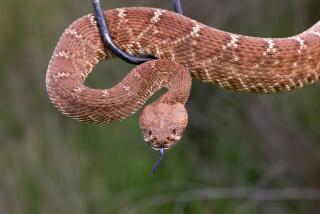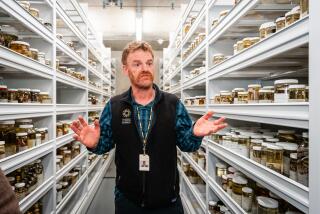Don’t bring snake
- Share via
Re “Man bitten by rattlesnake,” June 12
The Times reported that the man bitten by the snake took the snake to the hospital so the medical staff could determine what kind of antivenom to use for treatment. Attempting to transport a venomous snake for this purpose is dangerous and futile.
First, knowing the exact identity of the snake is not necessary. There is only one commercially available antivenom produced in the United States, and this antivenom works for all species of rattlesnakes. Once it was known that the offending snake was a rattlesnake, no further identification was needed.
Second, handling any venomous snake carries the risk of further bites. Even a recently killed rattlesnake can still bite people for up to an hour after death, even after decapitation. I have treated several patients envenomated by dead rattlesnakes.
It is not clear to me why this urban myth of the necessity of bringing the snake to the hospital continues. Although it might be interesting to the healthcare providers to see the rattlesnake, it will not be medically helpful -- and may even do harm.
Jeffrey R.
Suchard, MD
Director of Medical
Toxicology
Department of
Emergency Medicine
UC Irvine Medical Center
Orange
More to Read
Sign up for The Wild
We’ll help you find the best places to hike, bike and run, as well as the perfect silent spots for meditation and yoga.
You may occasionally receive promotional content from the Los Angeles Times.






